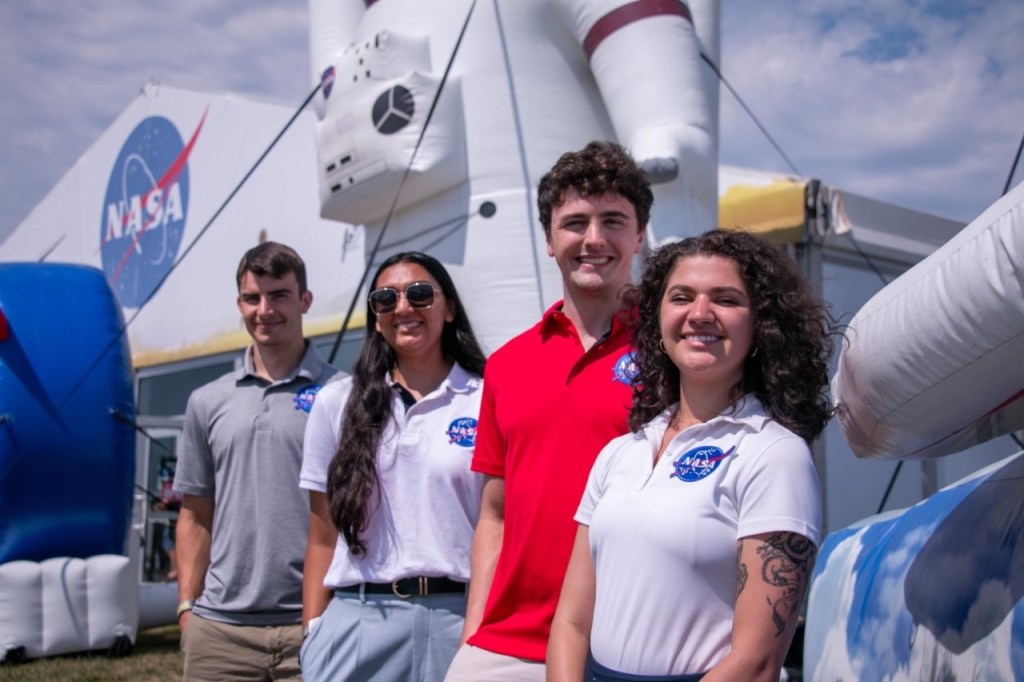PALMDALE, Calif. – NASA and scientists from the California Air Resources Board are conducting a series of research flights this month that are examining the atmosphere over the state to better understand the chemical dynamics of smog and greenhouse gases.
NASA’s DC-8 airborne laboratory is flying from the NASA Dryden Aircraft Operations Facility, Palmdale, over an area from San Diego as far north as Trinidad Head along the coast north of Eureka. The DC-8 is configured for atmospheric composition measurements as part of a large environmental science campaign to study the impact of air pollution on the Arctic’s atmospheric chemistry and changing climate. It will use the same suite of instruments for the California Air Resources missions. NASA is also sending a specially outfitted P-3 aircraft from the NASA Ames Research Center, Mountain View, Calif., and an ER-2 from NASA Dryden to fly over the state for additional sampling during the same time period.
The flights will gather samples aimed at helping the Air Resources Board obtain a better picture of greenhouse gas emission sources throughout the state. Other goals of the flights are to understand what type of pollution is being blown into the state from off-shore vessel traffic and to distinguish the differences in air mass chemistry between urban and rural areas.
“We will provide highly advanced capability to develop critically needed information on pollutant emissions and atmospheric concentrations both offshore and onshore over California, allowing us to better model air quality and future climate change,” said Hanwant Singh, an Ames project scientist.
“This collaboration will give us information on how pollution is created, transported and even destroyed,” said Bart Croes, chief of the Air Resources Board’s Research Division. “The use of highly sophisticated technology, data gathered at levels far beyond our normal reach and collaboration with NASA’s very knowledgeable technicians and scientists, combine to create a rare opportunity.”
NASA Dryden’s DC-8 mission manager Frank Cutler said the airborne laboratory will fly four flights of varying altitudes between June 18 and 25, including low-level passes over California’s Central Valley and coastal areas. One mission will take the aircraft over the ocean off Santa Barbara to investigate areas of natural methane seepage.
Flights will be coordinated with a series of NASA Earth observing satellites as they pass over the state. Researchers can use these simultaneous measurements to validate satellite data and improve modeled predictions of the impact of atmospheric pollution on California.
The Air Resources Board, a department of the California Environmental Protection Agency, has been a leader in developing and implementing aggressive pollution control measures to combat smog and particulate matter for 40 years. The agency is also working to reduce 25 percent of the state’s greenhouse gas emissions by 2020, as required by the Global Warming Solutions Act that Governor Arnold Schwarzenegger signed in 2006.
For additional information about California’s Air Resources Board, contact Leo Kay at 916-849-9843.
For more information about ARCTAS, visit:
http://www.espo.nasa.gov/arctas
For more information about NASA Dryden Flight Research Center and its research projects, visit:
https://www.nasa.gov/centers/dryden
– end –
text-only version of this release
To receive status reports and news releases issued from the Dryden Newsroom electronically, send a blank e-mail message to dfrc-subscribe@newsletters.nasa.gov. To unsubscribe, send a blank e-mail message to dfrc-unsubscribe@newsletters.nasa.gov. The system will confirm your request via e-mail.
Dryden Flight Research Center
P.O. Box 273
Edwards, California 93523
Phone 661/276-3449
FAX 661/276-3566
Beth Hagenauer
NASA Dryden Flight Research Center
(661) 276-7960
beth.hagenauer@nasa.gov
Robin Croft
NASA Ames Research Center, Moffett Field, Calif.
650-604-6787
deborah.r.croft@nasa.gov
























